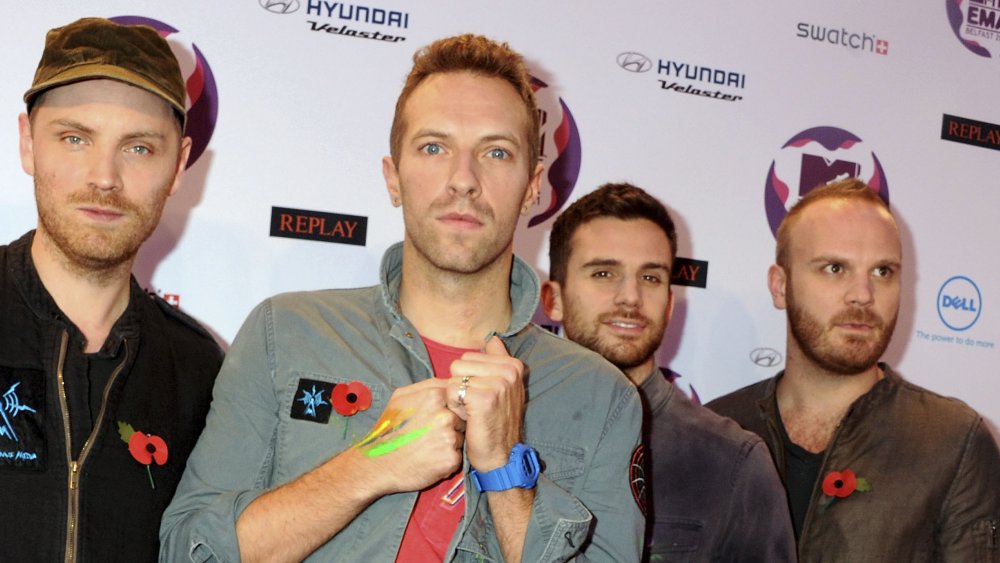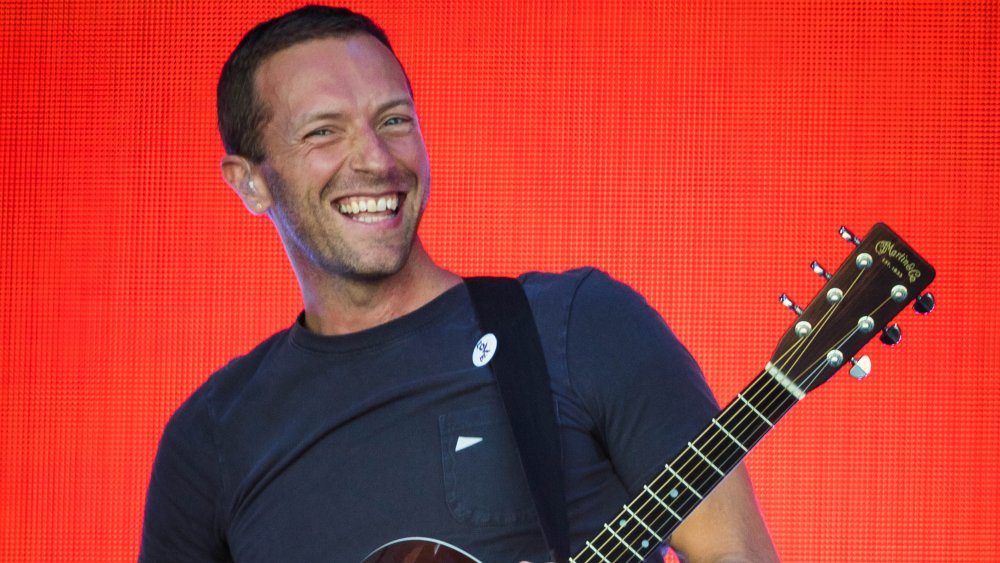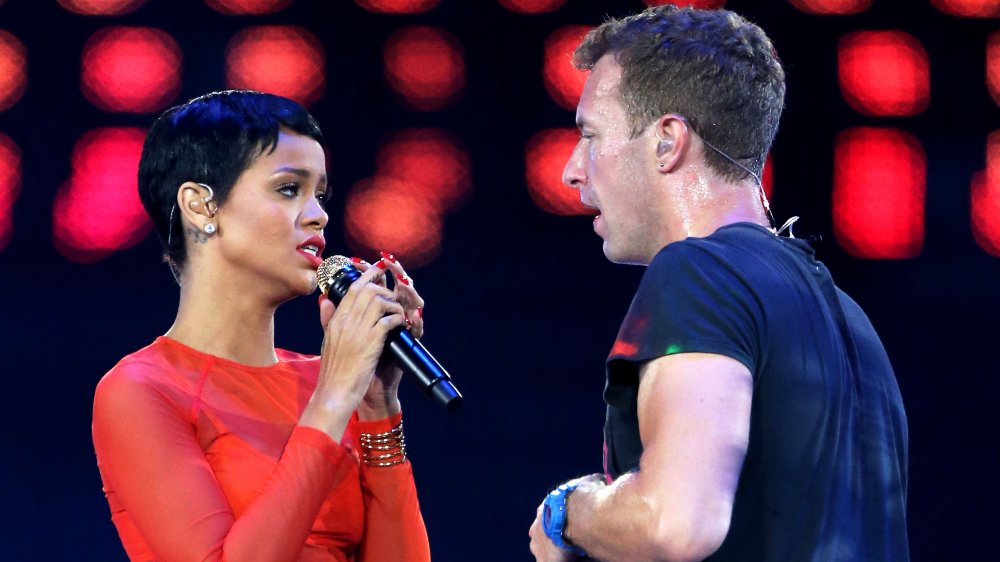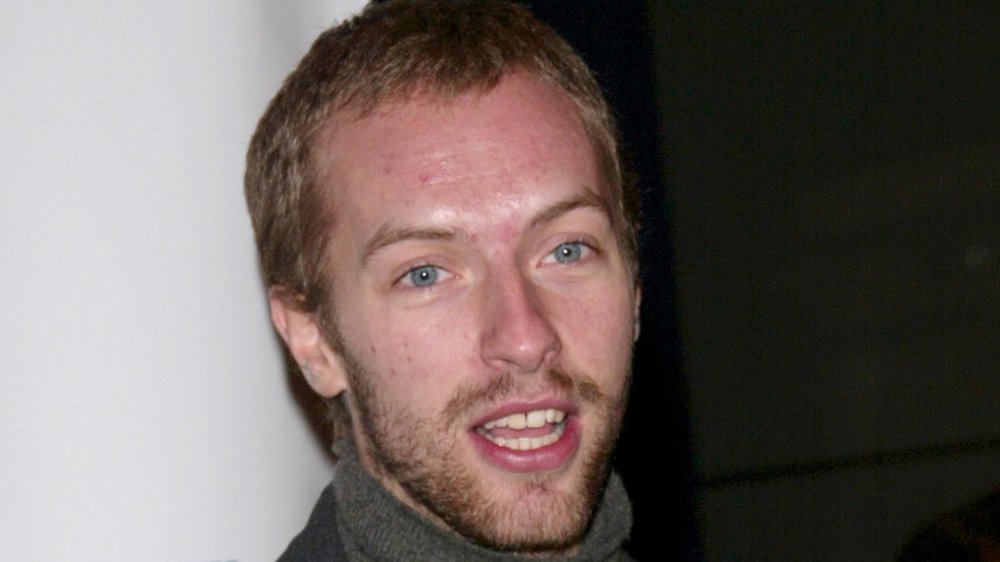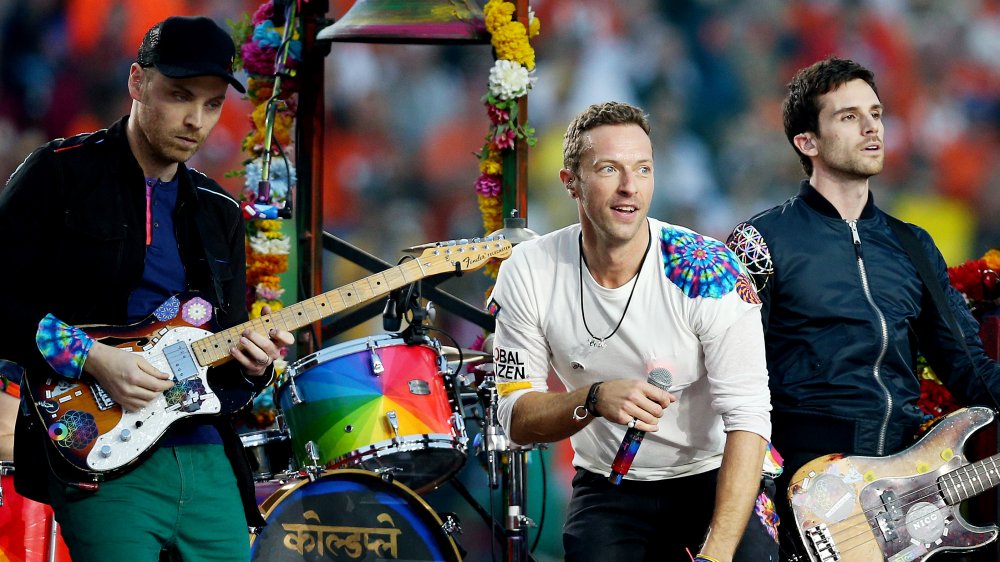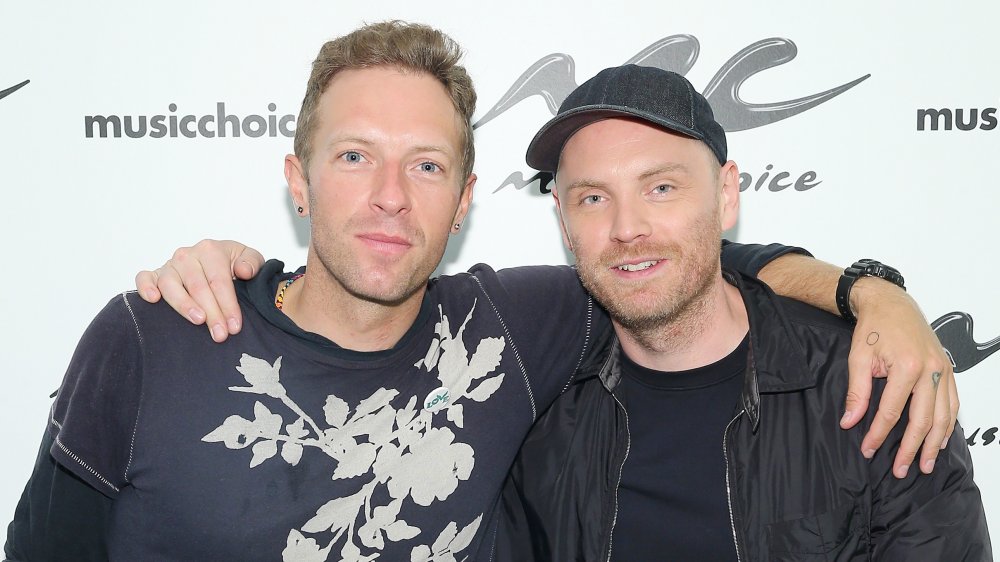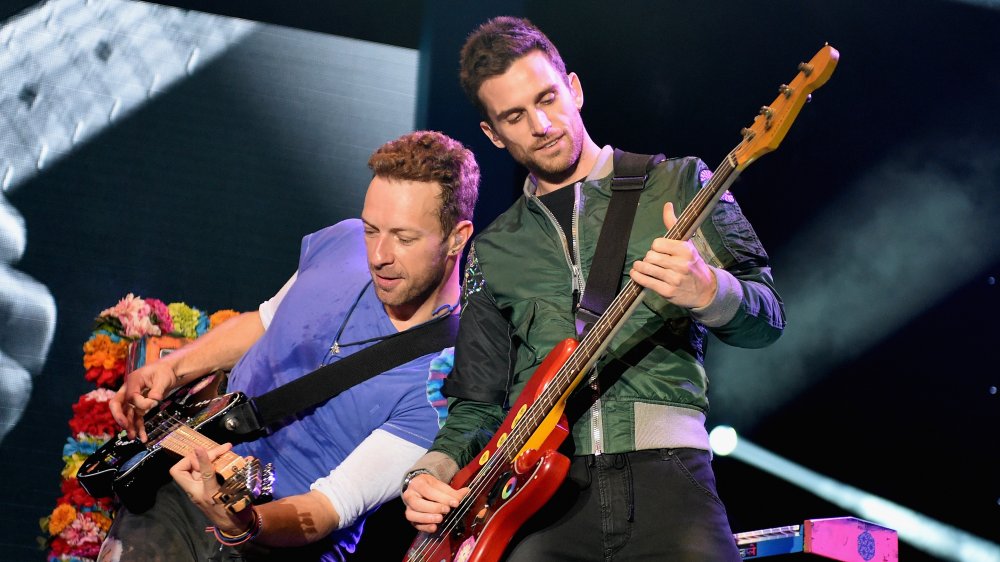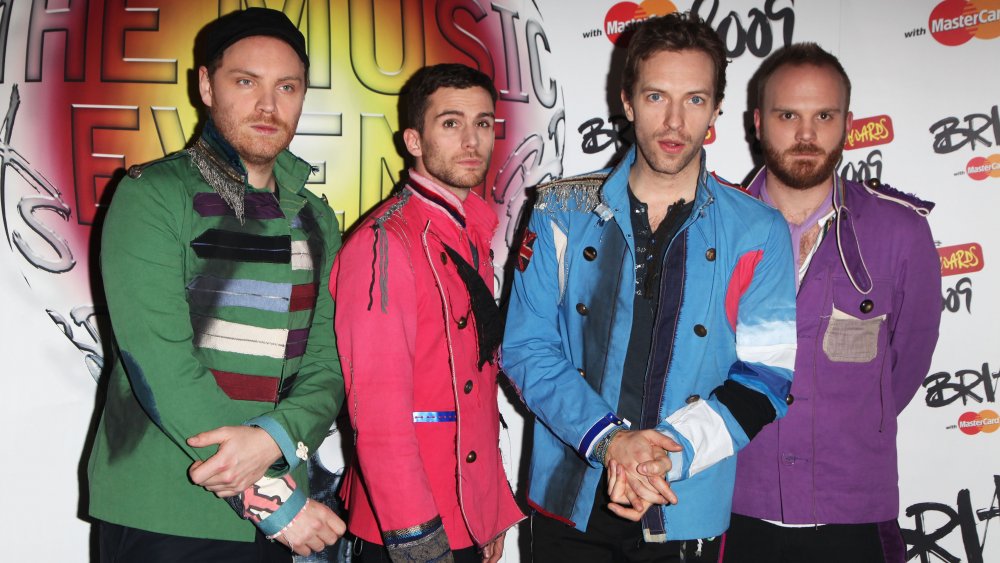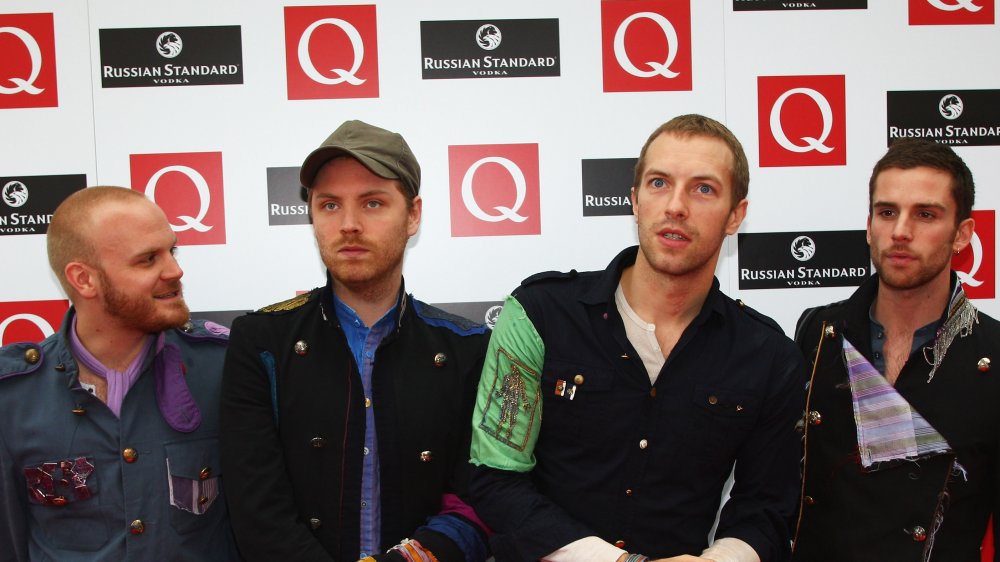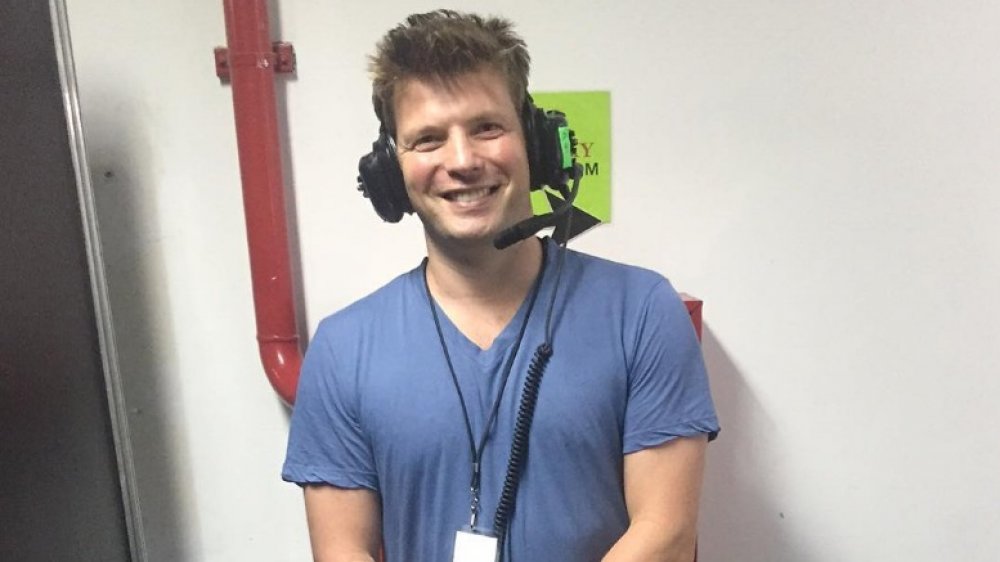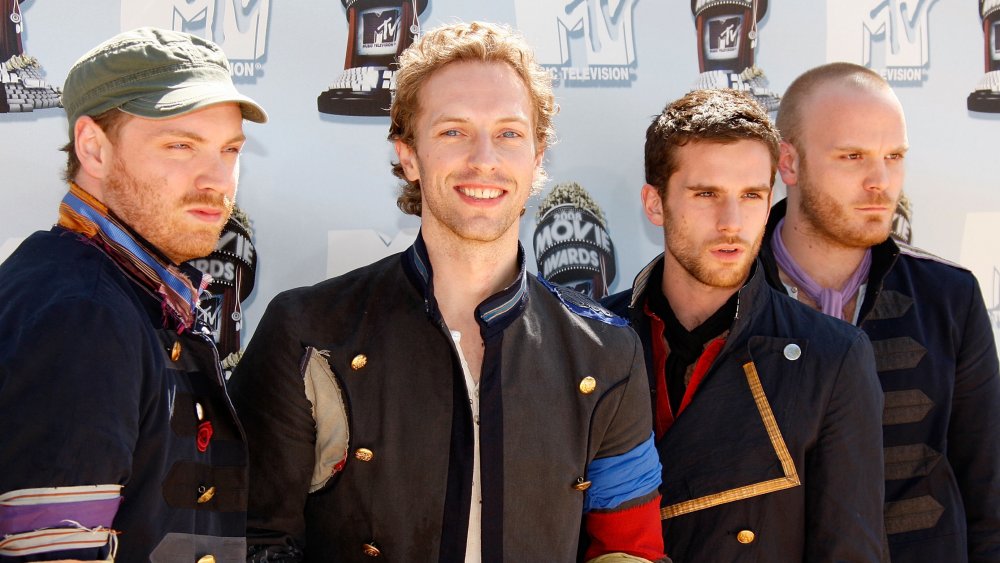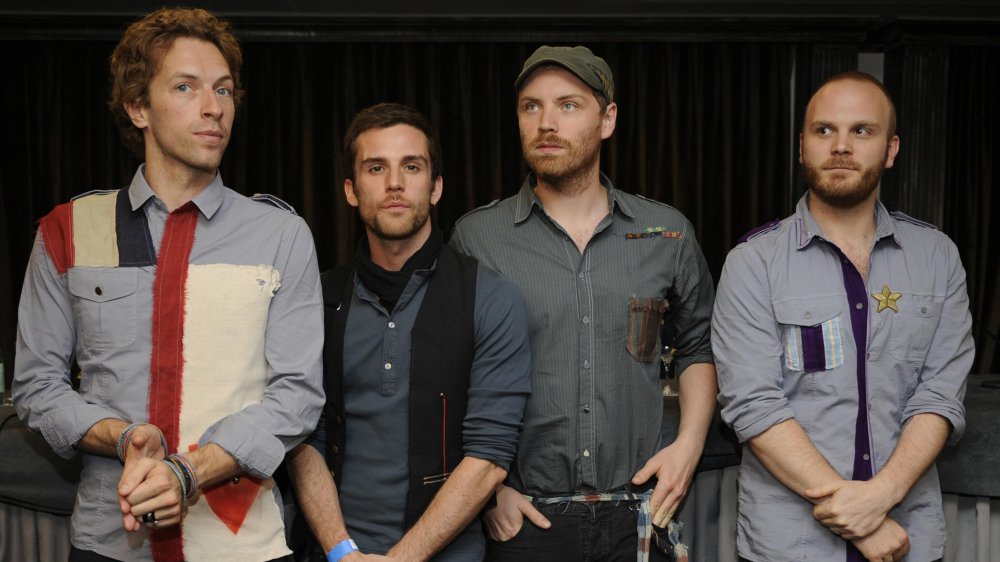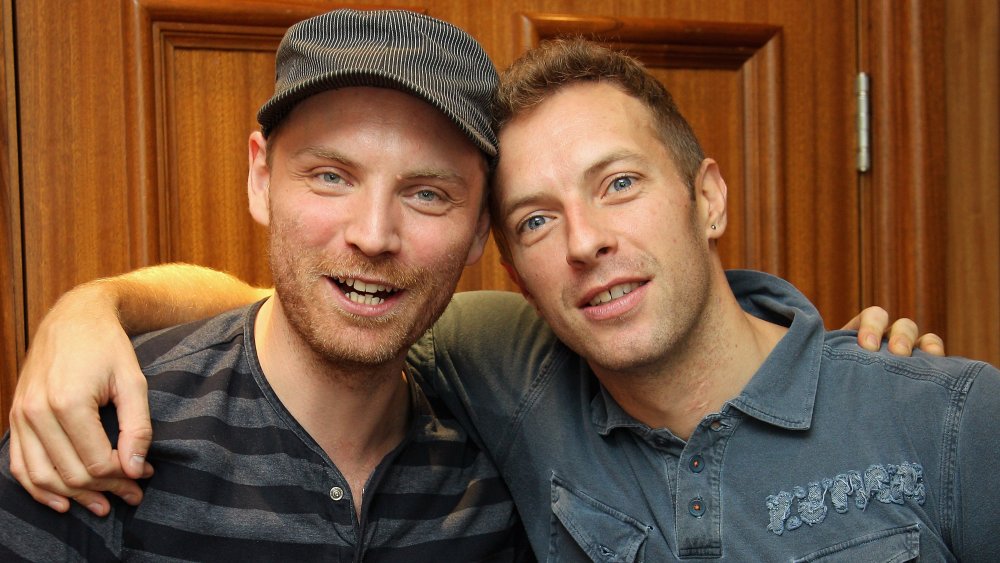The Untold Truth Of Coldplay
"And it was all yellow." Those were the words that skyrocketed Coldplay's stardom in the music scene at the start of the millennium. Nearly 20 years later, Consequence of Sound reported the announcement of the band's eighth studio album, Everyday Life, which clearly proves the everlasting appeal of this band to the world. In fact, Coldplay has such broad reach, former president Barack Obama, a self-professed fan, allowed the group to use a clip of him singing on its 2015 album A Head Full Of Dreams, according to The Sun.
The now-famous band, however, hasn't always existed in the stratosphere. The group of four — Chris Martin, Jonny Buckland, Will Champion, and Guy Berryman — got its start from humble beginnings and faced adversity throughout its long career. For those of you who aren't the kind of Coldplay superfans that the former head of the free world apparently is, let's break down the history of the group to see if it has what it takes to last another 20 years in the music industry. Hint: You don't have to be "The Scientist" to guess.
We present to you the untold truth of Coldplay.
Coldplay's hidden music studio
If you were to guess where Coldplay practices and records, where would that be? A high-end, luxury studio? Frontman Chris Martin's mansion? Every one of those would be wrong. Since 2008, the band has been working on music at a studio nicknamed The Bakery. Located in the northwestern end of London, The Bakery has not only been the band's go-location to practice and record, but also to just generally hang out together as crew.
Drummer and backing vocalist Will Champion told NME that Coldplay purposely chose the studio to remind the band members of their early college days together at University College London. "This is basically a giant version of Jonny's bedroom at Camden Road," said Champion, referencing fellow bandmate and guitarist Jonny Buckland. In those days, Champion said the band would "meet every day and you know, eat together and play music together." He revealed that the studio location really had been a working bakery, then an art studio afterwards but admitted that "The Art Gallery" would have sounded "a bit pretentious" as a studio name.
Does Coldplay have a problem with cultural appropriation?
Considering the massive, worldwide popularity of the band, it's clear that Coldplay means so much to so many people. That's not to say the band hasn't had some hiccups throughout the years. As reported by Spin, the band reportedly took criticism for cultural appropriation. The first time was for the 2012 "Princess of China" video featuring Rihanna. In the music video, she is seen in what was criticized as "Geisha style" — traditional Japanese garb — amongst action scenes described in the article as "Crouching Tiger, Hidden Dragon-ish aerial fight moves." Though an ill-advised wardrobe choice is far from the shadiest thing Rihanna has ever done, what makes the whole thing even more confusing is the fact that the word "China" is absent from the song lyrics.
Four years later, Coldplay again faced similar accusations — this time for their video "Hymn for the Weekend" featuring another superstar, Beyoncé. As detailed by Billboard, the band went to Mumbai for the shoot, and hired "an Indian director, cast and crew for the project." In the video, Beyoncé is dressed in traditional Indian clothing, while Chris Martin and the rest of the band are not. The video received mixed reception, with some critics tweeting (via Billboard) that it was a "bundle of stereotypes," whereas others, perhaps aptly posed the question: "Cultural appropriation is about power structures just as with racism. How is Beyoncé, a black woman, offensively appropriating?"
The time Coldplay needed a break from Chris Martin
For Coldplay's fourth studio album, Viva La Vida or Death and All His Friends, the band hired famous songwriter and producer Brian Eno to rework their sound. The move paid off, considering the indie rock foursome was previously voted Britain's "Band Most Likely to Put You to Sleep," in a Travelodge poll (via Pitchfork).
Eno then wanted to push Coldplay even further for their follow-up album, Mylo Xyloto — please don't ask us how to pronounce the name. According to The Guardian, Chris Martin was reportedly "enough of a nuisance in the Viva La Vida sessions, it seems, that Eno wrote the band a letter before agreeing to work with them again." Specifically, Eno temporarily banned Martin from the studio to let the rest of the members "play without the direction or cues of their frontman," Spin detailed. (He probably had a similar feeling after consciously uncoupling from his wife, Gwenyth Paltrow).
The strategy seemed to work, since Mylo Xyloto sold 80,000 copies in just seven days — a "record for the highest number of digital copies to be sold in [an] album's first week of release," according to NME.
Coldplay turned a huge negative into a positive
Coldplay faced haters and criticism throughout its rise in popularity. Fellow Brit rocker Noel Gallagher of Oasis even had some harsh words for his peers, calling them (per Pitchfork) "a bunch of f***in' pansies." Ouch.
Regardless, expectations were high for Coldplay after the band really broke into the mainstream with its second album, A Rush of Blood to the Head. However, the foursome hit another low in 2005, when The New York Times reviewer Jon Pareles slammed its third studio album X&Y, and famously called Coldplay "the most insufferable band of the decade." He went on to add "Coldplay is admired by everyone — everyone except me." Ok, the man clearly had a strong personal opinion.
In an interview for Rolling Stone, lead singer Chris Martin reflected on Pareles' negative review. "It was a big deal. It's the first real attack on your band, and from a publication we all respect," Martin admitted. The negative review actually created a positive effect, however, by pointing out flaws in the band's songwriting. That, plus the drive to push back on the haters, or as Martin put it, "There is something glamorous to me in taking a bit of a beating and keeping on going."
Coldplay's brief history in acting
Coldplay frontman Chris Martin has over 200 soundtrack credits on his IMDb page, as of this writing, which is clearly a testament to the universal appeal and background-friendly sound of the band. But that's not where Coldplay's involvement with the silver screen ends. Martin and guitarist Jonny Buckland were also actors in a never-released horror movie called Slashed.
As detailed by the official Coldplay E-Zine publication from 2002, the Irish rock band Ash filmed the movie during the U.S. tour of both bands. Martin and Buckland both played FBI detectives investigating "a series of bloody murders." NME reported additional cameos by Dave Grohl of The Foo Fighters and electronic artist Moby. Ash ended up using the some of the footage for their "Binary" music video, according to a separate NME report.
Though uncredited, Martin and Buckland also made cameos as themselves in the cult-classic movie Shaun of the Dead. However, Star Simon Pegg told Yahoo! Entertainment that people kept mistaking the musicians as zombies. "Chris and [Coldplay guitarist] Johnny Buckland came along and sent themselves up as zombie sympathizers." Pegg went on to clarify that "no, Chris Martin was not a zombie in Shaun of the Dead. Please stop writing that in lovely articles online."
Coldplay blew through serious money on tour
For Coldplay's 2012 tour supporting their album Mylo Xyloto, the band deployed some impressive new technology. Fans at the concerts received proprietary Xylobands, which would light up in different colors in sync to the live music. If this sounds expensive, you're right, it sure was. Speaking with The Sun, Chris Martin called the devices "a crucial part of the concert." He also shockingly revealed, "Most of the money we're earning on the tour is put into the wristbands."
Brainstorming for ideas on how to recoup some of that cash, Martin suggested that the bands could be collected and reused. This got quickly shot down, as he explained, "You have to clean everything in case someone picks up herpes or TB. Our lawyers told us we'd get sued, and having been sued a few times we're not keen on that."
Apparently, Coldplay figured out some way to stay profitable, since the band used the LED wristbands for a subsequent tour as well. The official Xylobands website confirmed that Coldplay deployed the technology for its 2016 A Head Full of Dreams stadium tour.
Coldplay gives more than just music to the world
Throughout the band's career, Coldplay has been open about its support to different causes and charities. As explained by The Faze, Coldplay supported the Make Trade Fair organization while touring, and promoted the fair-trade cause on its official website. When Rolling Stone asked about this commitment to the organization, Chris Martin said, "The spirit of rock and roll is freedom. It's about following what you believe in and not caring what anyone else says."
One of the charities Coldplay worked with was called Kids Company in London. The Guardian reported that the band donated millions of British pounds to the organization, though sadly Kids Company ceased all operations. Drummer and backing vocalist Will Champion mentioned that Coldplay worked to stay in contact with the main children's center the band sponsored, noting that the center's founder "only ever wanted to do good things."
Still, the band deserves a lot of praise for donating 10% of all their earnings to charity, which Martin revealed in an interview with Australia's Today show (via the Daily Mail). Although the frontman said the band doesn't "talk about it that much," he acknowledged the habit of charitable tithing, and even stated that, for him, it started when his mother garnished his "pocket money" as a child for the same philanthropic reason.
Coldplay's rough early start
Most bands typically start small and Coldplay is no exception. In its formative years, the band played to very small crowds — we're talking three people. Luckily, fledgling frontman Chris Martin, who at the time was so young he was still sporting braces, had no doubts about the band's grand future. Mat Whitecross, a close friend of the guys who attended University College London at the same time, filmed the group for years, including its earliest days, according to Variety.
Speaking with the outlet, Whitecross recalled attending a particularly awful set for the band at a farmer's college, which hardly anyone attended besides a "drunk farmer." Despite the show being delayed "until two in the morning," the videographer couldn't help but admire the true confidence of lead singer Martin. As Whitecross remembered, "Chris, hours later, is waving his hands in front of the camera and talking about how they're gonna be the biggest band [in] the world after they'd just had the worst gig of all time."
Who is the fifth member of Coldplay?
According to Coldplay's website, the band considers Phil Harvey its "fifth member." Just who is this mystery man? Harvey told Music Business Worldwide that he and Chris Martin became school friends when the two were 13 years old. Both were members of a band called The Rockin' Honkies, in which bandmates downgraded Harvey to sound engineer as a young Martin took the role as keyboardist.
The two friends attended separate universities and Martin formed what became Coldplay. Harvey hung around the newly formed foursome, and despite having no music industry experience, offered to be the band's manager. He helped fund one of the band's first records, the Safety EP, which was instrumental in launching Coldplay's career.
Harvey left his role the week Coldplay released A Rush of Blood to the Head. Though he said his specific reason for quitting was "hard to explain," he cited "pressure" he felt from the band's rapid success, which led to his "faltering" health. His personal relationship with Martin (the two were best friends) also "suffered." Years later, Harvey reunited with Coldplay, taking on the role of creative director — a title he said he "f***ing hate[s]." When pressed about what he actually does for the crew, Harvey demurred a bit before admitting, "I think over the years I've learned to be useful: I've learned how to design a live show; I've learned to make videos; I've learned how to A&R. I just sort of fill in the gaps."
What's bigger than a world tour?
For Coldplay's 2012 Mylo Xyloto tour — yes, the one with the crazy light up wristbands — the band raked in the highest grossing tour of the year, Billboard reported. Then, it got even bigger. Coldplay's 2017 worldwide A Head Full of Dreams tour was the third biggest tour ever in terms of total gross money, according to Billboard. The tour ended up earning over $523 million. Wow.
What's the secret to its phenomenal live shows? Band creative director and friend Phil Harvey talked to Music Business Worldwide about Coldplay and Chris Martin's "boundless energy" during the tour. Harvey said of Martin, "You'll never hear a syllable of grumbling from him, he's so grateful to be able to do this and feels a great sense of responsibility to give people a joyful experience — Guy, Will and Jonny are the same." The band's manager, Dave Holmes, was also along for the massively successful tour. Holmes admitted to testing times on tour but gave credit to the band and "the best crew in the world" for creating history.
How did these college buddies pick the name Coldplay?
Looking back, the world-famous band Coldplay was really just a normal group of guys playing shows in their college years. In 1996, the four men met at University College London in the same residence that just happened to have many musicians. The band — Chris Martin, Jonny Buckland, Will Champion, and Guy Berryman — told The Faze, "Chris and Jonny started writing music together; it took off from there. We were friends first and that's when we decided we should make music." In an interview for BBC Radio 2 as reported by UCL News, Buckland recalled his first impression of Martin, "Chris was running up and down the corridor with this really long curly mop and I thought he was a bit mad, a bit wacky."
According to Viva Coldplay: A Biography, when the band was just Martin and Buckland, Martin supposedly toyed with the idea of them forming "a boy band" called Pectoralz, however that "remained just a bad pipe dream." After bassist Berryman and drummer Champion came into the mix, the band renamed itself to Starfish for exactly one gig, according to Buckland, who spoke with SPIN. After that, a decision was made to adapt the band's new name, taken in part from "a poetry book, Child's Reflections, Cold Play." Another band was apparently already using the name, but it "handed [it] down" to the current group.
In the end, Coldplay is making more green than yellow
You can easily bet that by being one of the most popular bands in the world for close to 20 years Coldplay amassed quite a sum of money. Just how much is the band worth? The Times reported in 2019 that the band was worth about £372 million pounds or about $480 million in U.S. dollars.
Lead singer Chris Martin alone is worth an estimated $120 million, according to Celebrity Net Worth. Though he has been notably charitable to many organizations, and has worked directly with 21, as counted by Look to the Stars, the man does spend money on himself. In 2019, Variety reported that Martin bought a home in Malibu, California worth close to $5.5 million. This is in addition to a $4.45 million property and another $3.7 million property all in the Malibu area.
Bandmate Jonny Buckland had been snatching up properties as well. Observer reported in 2016 that Buckland purchased a $5.1 million apartment in the NoHo neighborhood of NYC. The best part? It's right next door to another (presumably just as pricey) unit he already owns, which led Observer to speculate that "a combination [of the two units] is imminent." Maybe he'll take over the whole building if the band continues to make this much money.

